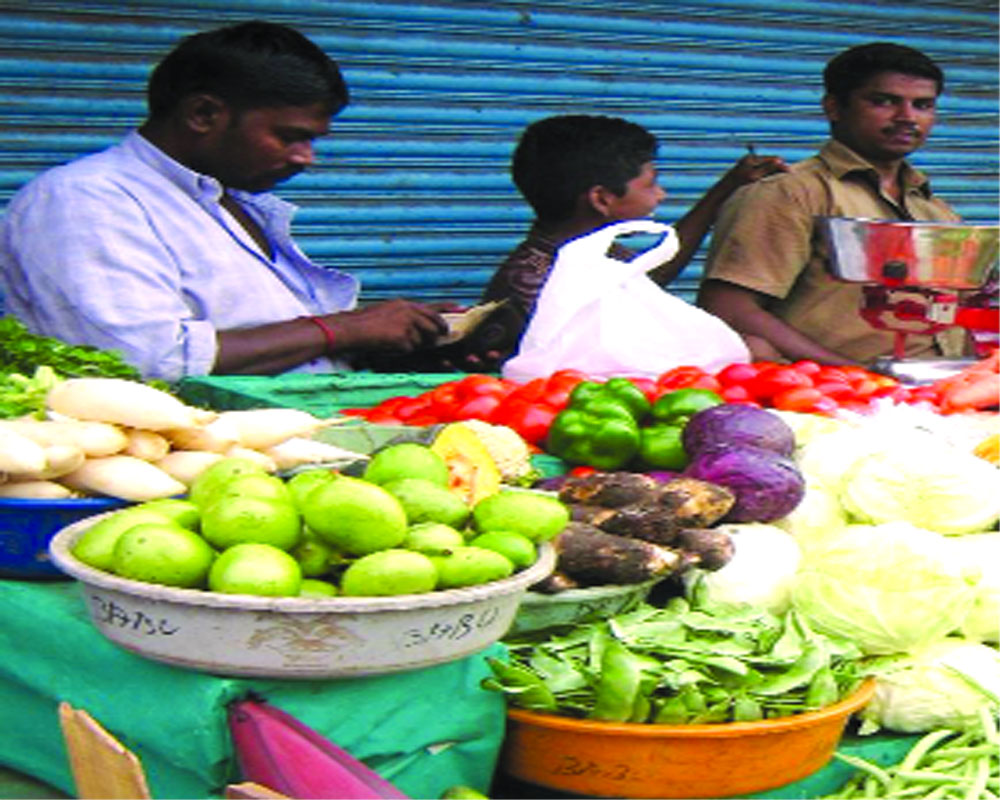Soaring prices of veggie, pulse, other essential items dampen festive spirits
Already suffering from the Covid-19-induced miseries, the “aam aadmi” is finding it tough to manage his household affairs with his kitchen budget having doubled or tripled due to soaring prices of vegetables, pulses and even wheat flour (atta). As if the wiping out of the annual festivities due to coronavirus wasn’t enough, the price rise has only added to the dampening of the festive spirits.
The kitchen staples are burning a hole in the common man’s pocket. Prices of vegetables are already high as onions cost Rs 80-100 a kg, potatoes Rs 50-60 a kg and tomatoes Rs 60-70 a kg while the retail prices of pulses have recently registered a steep hike. There has been a sharp increase in prices of most pulses including tur (arhar), moong, masoor and urad that have crossed the Rs 100 per kg mark in most cities across India.
Interestingly, a significant population avoids consuming onions during the “navratra” period (for nine days) but despite the lower consumption the prices continue to be very high due to shortage of supply.
Officials of the Agriculture Ministry said potato prices too have surged more than 62 per cent since May as production fell in key growing States and demand soared amid the Covid-19 pandemic. Traders in Uttar Pradesh, the largest potato producer in the country, said prices will remain on these lines at least till March.
As for onions, according to Rajendra Sharma, a wholesale supplier of the bulb at Asia’s biggest vegetable and fruits market Azadpur, the supply has reduced from Maharashtra and Karnataka due to its shortage. “Of the 28 lakh tonnes stored in Maharashtra, around 10-11 lakh tonnes remain now. The yearly consumption of onions in India is slated to be 160 lakh tonnes with Maharashtra alone consuming around 4,000-6,000 tonnes per day,” he said.
“The heavy rain in September not only destroyed the new crop in Karnataka but also took a toll on stored onions in States like Madhya Pradesh and Gujarat. Farmers in Maharashtra alone had marketable onions, having stored the 28 lakh tonnes at the start of summer,” he added.
The Ministry of Consumer Affairs has imposed a stock limit of two tonnes on retailers and 25 tonnes for wholesalers till December 31. The Ministry has also supplied 35,000 metric tonnes of onion to States and Union Territories to maintain certain stability in prices.
The national acreage for rabi onions last season was 10 lakh hectares as against 7 lakh hectares of 2018-19. But the additional wastage has constrained supply. There are three main onion crops — kharif (June-July sowing, post-October harvest), late kharif (September sowing, post-December harvest), and rabi (December-January sowing, post-March harvest). The rabi crop has the least moisture content, making it amenable to storage.
Given the steep hike in the onion price, the Telangana Government on Saturday decided to sell the edible bulb at Rs 35 per kilo at the Government-run “Rythu Bazaars”. Two kilos of onions would be sold per person and the consumers have to show any identity card.
According to Suresh Agarwal, All India Dal Miller Association, there is a shortage of pulses in the country as farmers have switched over from pulses to wheat and soyabean since 2018. Besides, the Government policies also led to this situation.
Most pulses come to India from South African countries, Canada and Myanmar. India had imported 3.17 MT of pulses in 2014. This rose to 5.8 MT in 2016. It further rose to 6.6 MT in 2017, followed by 5.6 MT in 2018. In 2018-19 though, the imports reduced to 2.527 MT.
To cool down the price of pulses, the Centre recently released 40,000 tonnes of tur from the buffer stock in open market sale (OMS) in small lots, so that the releases may reach the retail market at a faster pace and help in cooling off rising prices. Dhuli urad is being offered at Rs 79 per kilo for K-18 (stock of kharif-2018), and Rs 81 per kilo for K-19. Similarly, tur is offered for retail intervention at Rs 85 per kilo.
According to the Ministry of Consumer Affairs data for October 24, the maximum price of rice is Rs 55 a kg in Pune and Tiruchirapalli. Wheat is selling at Rs 48 a kg in Nashik. Atta is selling at Rs 55 a kg in Port Blair while gram dal is being sold at Rs 96 in Nashik. Tur and urad dal’s maximum price is reported at Rs 130 a kg in Varanasi and Tiruchirapalli. Moong dal is selling at Rs 138 a kg in Mumbai. As per data, the maximum price of onion is reported at Rs 95 a kg in Mumbai while tomato’s price was reported at Rs 80 a kg in Raiganj.


























